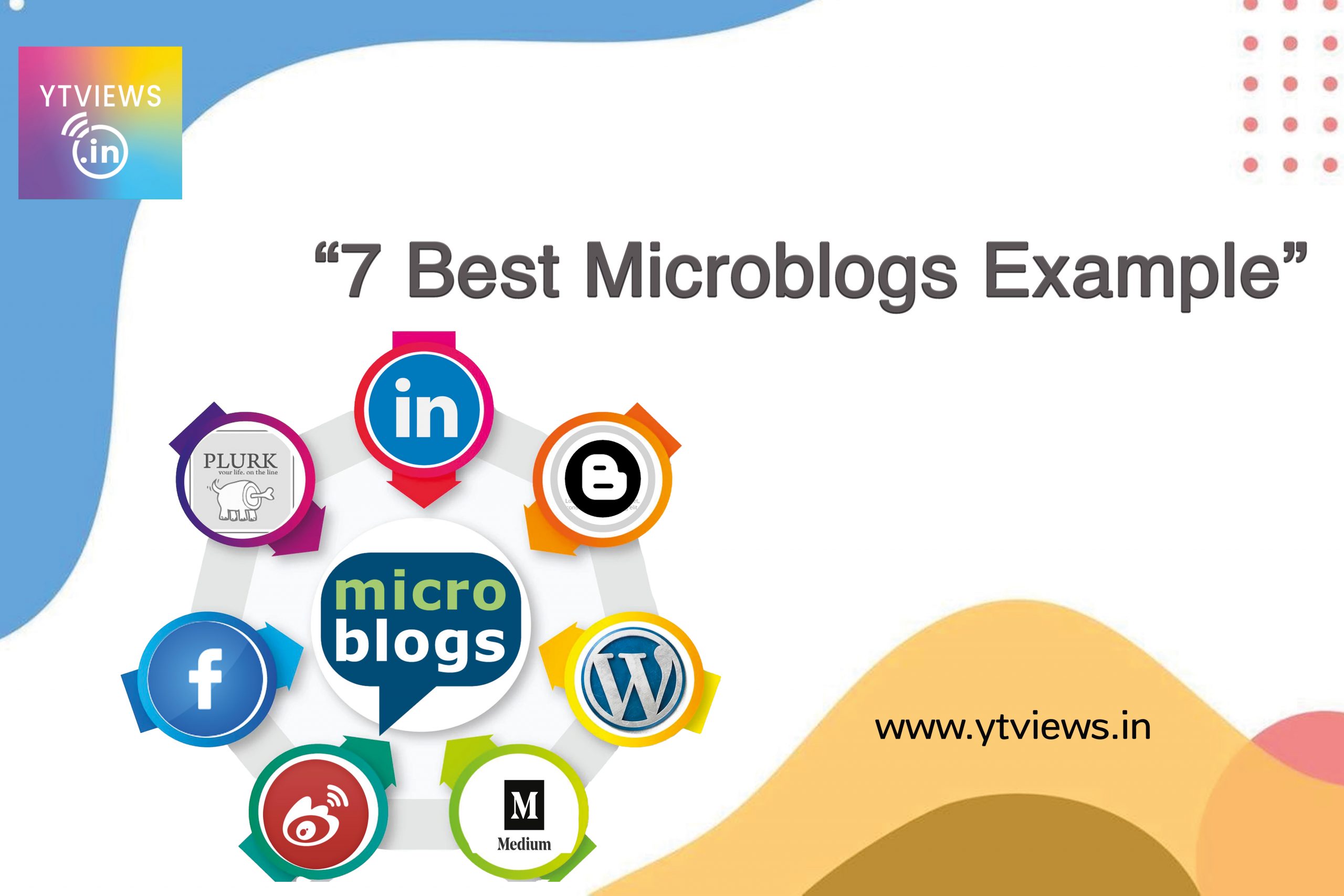7 Best Microblogs Examples
 A microblog is a type of blog post that is generally shorter, usually less than 300 words, than traditional blog posts and is sometimes referred to as a “micro-post”. Links, audio extracts or infographics. Text-based microblogs often consist of one or two sentences and rarely exceed the length of a paragraph.
A microblog is a type of blog post that is generally shorter, usually less than 300 words, than traditional blog posts and is sometimes referred to as a “micro-post”. Links, audio extracts or infographics. Text-based microblogs often consist of one or two sentences and rarely exceed the length of a paragraph.
However, with additional media formats for microblogging now available, many sites are dedicated exclusively to non-text microblogging as well.
Microblogs are often associated with social media platforms, as many feeds consist solely of microblog posts. Beyond social media, however, various sites and platforms have sprung up solely dedicated to microblogging, offering users a range of features, services and connectivity.

1. LinkedIn:
~ Microblogging for professionals and those who want to promote their brands
~ 830 million members with 58 million registered businesses
~ LinkedIn follows the standard social media microblogging model, but with a professional edge.
From students to professionals at the top of their game, LinkedIn’s status as a social media platform for professionals makes it the perfect microblogging site for work and career-related posts. Microblogging on LinkedIn will help you expand your network and potentially even get the attention of your next job opportunity.
2. Plurk:
~ Find friends via microblogging and integrate with Twitter
~ 100 million monthly visitors and 1 million daily users
For microbloggers looking for a few extra personas and a place to connect with friends and colleagues, Plurk bridges the gap between niche microblogging communities and focuses on connecting people. Enjoyed mostly by younger communities, Plurk is a hit with its funky appeal.
3. Facebook:
~ Live microblogging and high interaction on one of the biggest social media platforms around
~ 2.9 billion monthly users
Still the most popular social media platform in the world, Facebook functions as a lucrative option and one of the best microblogging sites and channels out there. Immediacy is the strength of Facebook and the ability for people to share live video, text (status) updates and audio clips, along with the fact that users of the platform spend most of their time. the social media giant a happy hunting ground for microblogging.
4. Blogger:
~ A simple, no-frills legacy microblogging site – perfect for beginners
~ European summertime. 1999 with about 40-50 million users
Blogger is the original blogging site. Since the late 1990s, Blogger has provided beginner bloggers with access to a basic blogging platform that’s free and easy to learn. While many online readers will know to use Blogger for their microblogging because of its distinctive themes, the site’s standard microblogging capabilities still include backlinks and other basics.
5. WordPress:
~ Choose a WordPress microblogging plugin to add to your website without coding
~ 409 million users
As a website building platform, WordPress reigns supreme, with a range of innovative features and functionality that help millions of people create their websites. And while the regular WordPress blogging feature is still widely used, it also offers various built-in microblogging plugin options that allow users to add microblogging to their WordPress-hosted websites
6. Medium:
~ A vibrant blogging community that gives you access to your target audience
~ 60 million monthly active users
Although Medium is known for hosting some of the richest published content and blog posts, there is also room for microblogging. The site’s excellent algorithmic capabilities help writers access their favourite content, and the lack of a word count limit on the site means many bloggers benefit. Medium members use microblogging to syndicate blog content, build brand awareness, and share quality backlinks for SEO.
7. Micro. blog:
~ Provides an aggregated view of microblogs from across the web
~ Unknown users. Free version available, but hosted prices start at $5/month
Micro. blog is designed to encourage aggregate access. Rather than pursuing the status of a social media platform, Micro. blog is based on the RSS feed and works on open web principles. The microblogging platform collects a selection of blogs from various sites and individuals that the user follows and curates them in their feed. Micro. blog Faster Post Timeline is aimed at independent microbloggers who want to link their content to a collection of blogs under their domain name.
Related Posts

Instagram Implements Advanced Protections for Teen Users.

5 Skills to Become a Successful Social Media Marketer

LinkedIn Adds AI Training Opt-out Option

What Video Editing Software Do Youtubers Use in 2024?

How VoIP Services are changing the Way We Make Calls




































